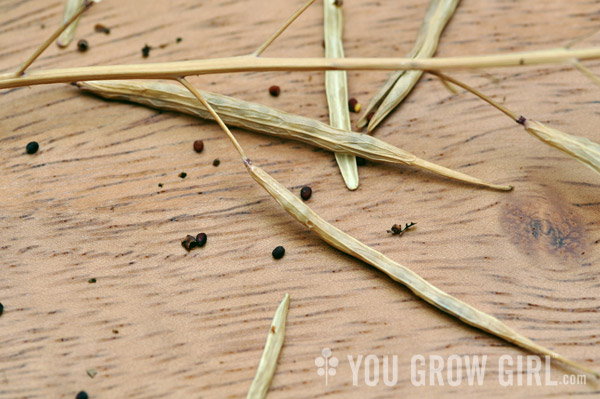
The 2014 growing season was a strange one. But then again, aren’t they all? Spring came painfully late, and summer, when it finally arrived, announced its presence in small, anemic spurts. The weather was often cooler than usual, and when it rained, it came down hard and fast, knocking over anything that wasn’t properly staked or tethered.
As I have mentioned (repeatedly), it was a bad year for tomatoes, pumpkins, and anything in want of heat, but the bounty of peas and greens was abundant and very nearly overwhelming. This past month I caught a bad bug that wouldn’t quit. As I sniffed and hacked away the month of September, the garden quietly went feral, turning into a sea of foliage with plants such as callaloo (aka Amaranthus spinosus, a type of Amaranth that is popular in the West Indies) growing taller than me (and then some). Self-seeded mustard popped up around the garden more than ever before and it stuck around a lot longer too. It was a deluge of mustard. And cress (Lepidium sativum). So much cress. Let’s not forget the arugula and mizuna: 2 kinds of each. I had enough bitter and spicy greens to open up a roadside stand. About halfway into spring I embraced the abundance of the season, deciding that I would allow much of the mustard greens to grow to seed rather than pulling it out in early summer as I usually do to be replaced with a heat-loving crop. I often allow some mustard to self-seed for the following year, but decided that it would be an experiment to discover whether or not it is viable to produce my own mustard seed for pickling and cooking.
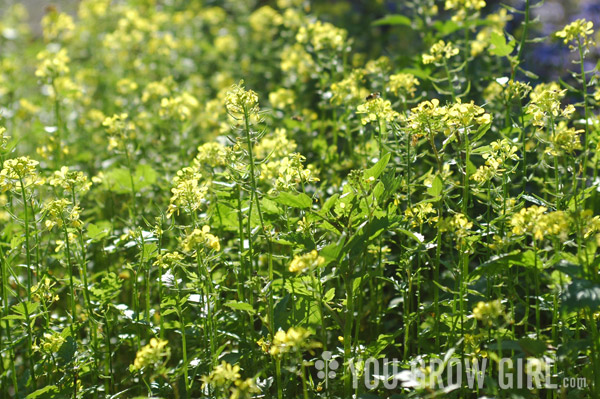
Eventually my garden was full of tall stalks of yellow brassica flowers. The bees and pollinators were more abundant than ever. It made me happy to make them happy and I revelled in the energetic buzz they brought to the garden on sunny days. Flowers were replaced by seedpods and the tall and lanky stems were repeatedly knocked over by a series of intense summer rains. Next came the vile and opportunistic aphids who moved in to take advantage of the plants’ weakness as they made their final push to reproduce. I did my best to keep the population at bay, crushing countless soft and gooey bodies between my fingers daily. Sometimes more. So when the time came to harvest the plants I lifted them out, roots and all, and hung them upside down in the shed to dry with the promise that I’d get around to processing the seeds when they were ready. But then life, and laziness, and who has time to process a million seedpods and the previously mentioned plague and suddenly it is the end of October and the hard frost is coming soon and it won’t be long before my Japanese maples and assorted and sundry will need to go into the shed and oh crap, I still haven’t done anything about the massive bundles of dry plants and all of those damned seeds!
In a panic, I got off my butt and faced the situation in the shed. I am amazed that all of that seed hung in the shed for so long without incident, because in my first year here I did the same with a particularly abundant crop of coriander seed and they were eaten up by what I assume were rodents. Chalk it up to the fickle tastes of mice or a ballooning feral cat population, but the mustards and cress were not touched.
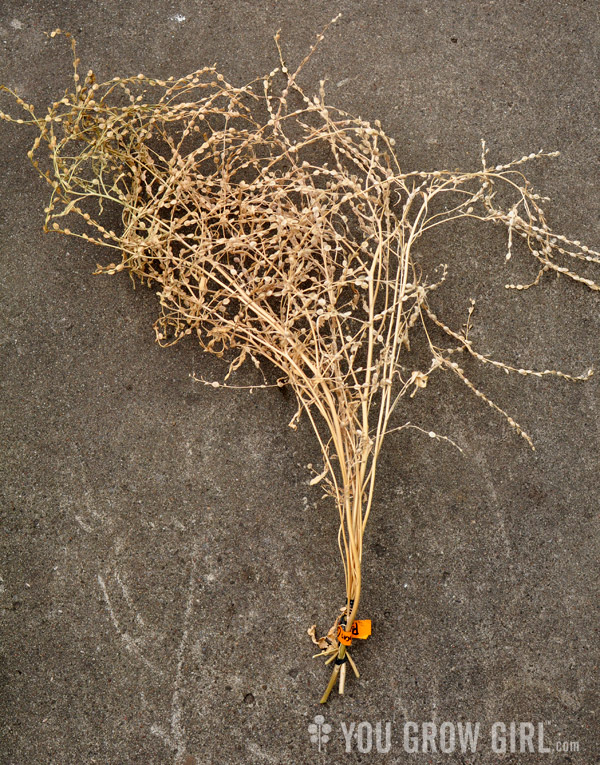
Cress seed. The little, red seeds are inside a papery covering.
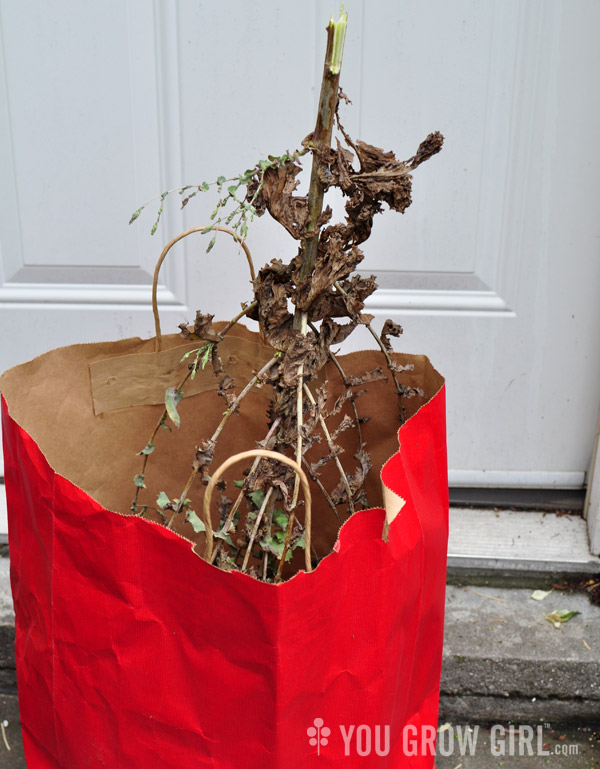
This is lettuce, but I often use the same method to knock dried seeds off of their plants. I put the whole thing into an over-sized, paper shopping bag and shake like crazy. Most of the seeds fall into the bottom of the bag. This works well with seeds that do not have a chaff that must be separated.
In the end, I processed and packaged the seed that I need for future crops (I was running low on a few varieties) into paper envelopes and the shed is now clear. I got about halfway into the process with the largest crop of mustard, but a huge bowl of dried pods currently sits on my dining room table waiting for me to extract the seeds. I suspect it will be mid-winter before I get to it or give up and throw the lot into a giant paper bag.
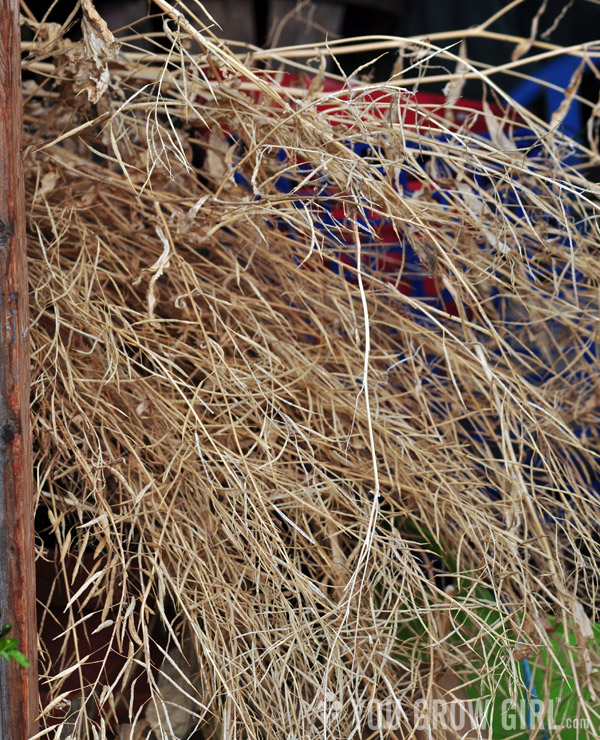
A whole mess of mustard seedpods and stems to process.
This is not my first experience in hand processing large batches of seed for eating, so I was not entirely naive about the work involved. Most years I do this on a smaller scale with coriander. One fall I had the same bright idea with a particularly prolific amaranth and toiled for hours winnowing the chaff from what amounted to a few handfuls of grain! I was never able to eat it because no foodstuff seemed worthy of the work I had invested and I still have that small jar of amaranth seed sitting on a kitchen shelf!
I suppose what drives me into these ridiculous situations is the feeling that it is important to have these experiences and really understand where my food comes from. That cheap bag of mustard seed from the spice shop may be processed by machine, yet it is much more meaningful now that I have gone through the process of growing, harvesting, and processing a batch myself.
hmmmm. now I’m craving potato and pea samosas with lots of mustard seed in them. and tangy tamarind chutney for dipping. ;oP
Seed saving is in the gardener’s soul.
Still spicy mustardy greens here too – mizuna, arugula, rapini-ish something. Useful for late fall cooking/eating.
Cheers,
Jake
Not surprisingly, I’ve been craving Indian food lately. I like my curry with a lot of mustard seed so it makes sense.
Bummer that you had such a difficult gardening season. Still, you’ve re-inspired me to try growing my own mustard seed. Last time I attempted it where there wasn’t enough sun and the plants never matured enough to flower.
I hope you have luck next time! I found that for me space was an issue since they take up a lot of it as they mature. And of course the work in separating the dried pods from the seed.
Enjoyed your post, and I can totally relate to this! I too am a saver of way too many seeds, including the ones that I use for food (such as coriander and fennel) – and the more challenging, smaller seeds that I’ve given up on trying to save enough for eating and only save for seed now (mustard is among these). Of all of them, I find lettuce about the most difficult – separating the seeds from all that fluffy stuff wears heavily on the eyes and the patience. Thus my big brown bags of upside down lettuce stalks with their dried seedheads tend to wait a very long time before I get around to them each year.
Laurie, to save my eyes and nerves, I scatter my lettuce seeds with fluff and all in my lettuce box. I justust shake the dried seed heads, then cut the dried stock and scatter on the soil. Harvesting lettuce can stretch one’s nerves.
I love how the weather can be so different from region to region and throughout all of the varying zones. Up here in the very pacific northwest Washington, we had an amazing year for all sun and heat loving crop. So much so some of our old favorites we are known for in this area didn’t do so well! Gave me a wonderful lesson in tomatoes and peppers!